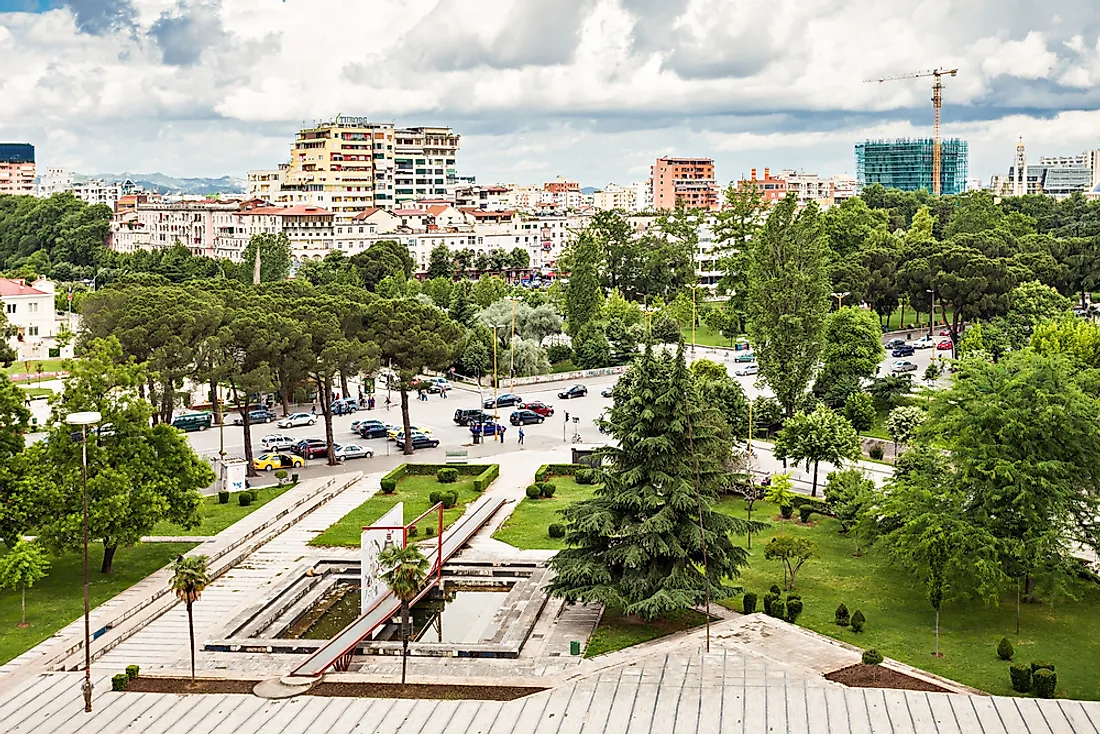What Is The Capital Of Albania?

Tirana is the capital and the largest city of Albania. It is the center of the country's economy, culture, and government activities. To the east of Tirana is the Dajti Mountain and to its north-west side is the slight valley opening. The city is 700 kilometers from Athens in Greece, 290 kilometers from Skopje and 160 miles from Pristina. The precise coordinates of the city are 41°19'44" N 19°49'04" E.
History
The city was founded is 1614 and thousands of different ethnicities have inhabited the area. Tirana Mosaic, which is an ancient building in the town, is believed to have been built by Romans during the third century. The establishment of the city was later done down the line in the twentieth century by the act of Congress following the country's declaration of its Independence in 1912. In the year 1989, there was the introduction of the Albanian language in Tirana's schools. The Serbian army later occupied the city for a short period. Austro, a Hungarian architect, organized and compiled the outline and designs of the city, and in 1923 Austrian architects Armando Brasini and Florestano Di Fausto created the first plans during the reign of the Italian dictator, Benito Mussolini. In 1939, the fascist forces of Mussolini took over the city leading to the appointment of a puppet government within the town. From 1944 to 1994, improvements to city layout and design took place through the construction of magnificent complexes, large factories, and companies. The transportation within the city during this period was by bicycles, trucks, and buses. Besides, private car ownership was against the law at the time, hence limiting private means of transport. In 2000, the former city mayor launched a campaign that propagated the demolition of the illegal building within the city so that it could provide space for the expansion of Major roads and streets.
Climate
From the Koppen climate interpretation, Tirana has a humid subtropical climate during the summer time, and is the eighth sunniest city in Europe. The city experiences a vast rainfall of up to 44 millimeters whereby the winters are cold and wet with occurrences of snowfall that melt after a short period.
Demography
Tirana is the city with the largest population in Albania, probably because it is the largest among all the cities in the country. The city houses more than 800,000 people and its occupants belong to different ethnicities just like any other city in developed nations. The ethnicity distribution includes 84% Albanians, 0.35% Greek, and a negligible percentage of Macedonians. Moreover, Tirana has an impressive fact in that the female population living in the city is higher than the male population.
Economy
The heart of Albania's economy is in Tirana because it hosts thousands of companies that belong to the local and international investors. The city's economy can be categorized into the service sector, which is the most significant source of income at 68.5%. The city's industrial sector contributes 26.1% of revenue, while its agricultural sector contributes to 5.4% of income.











